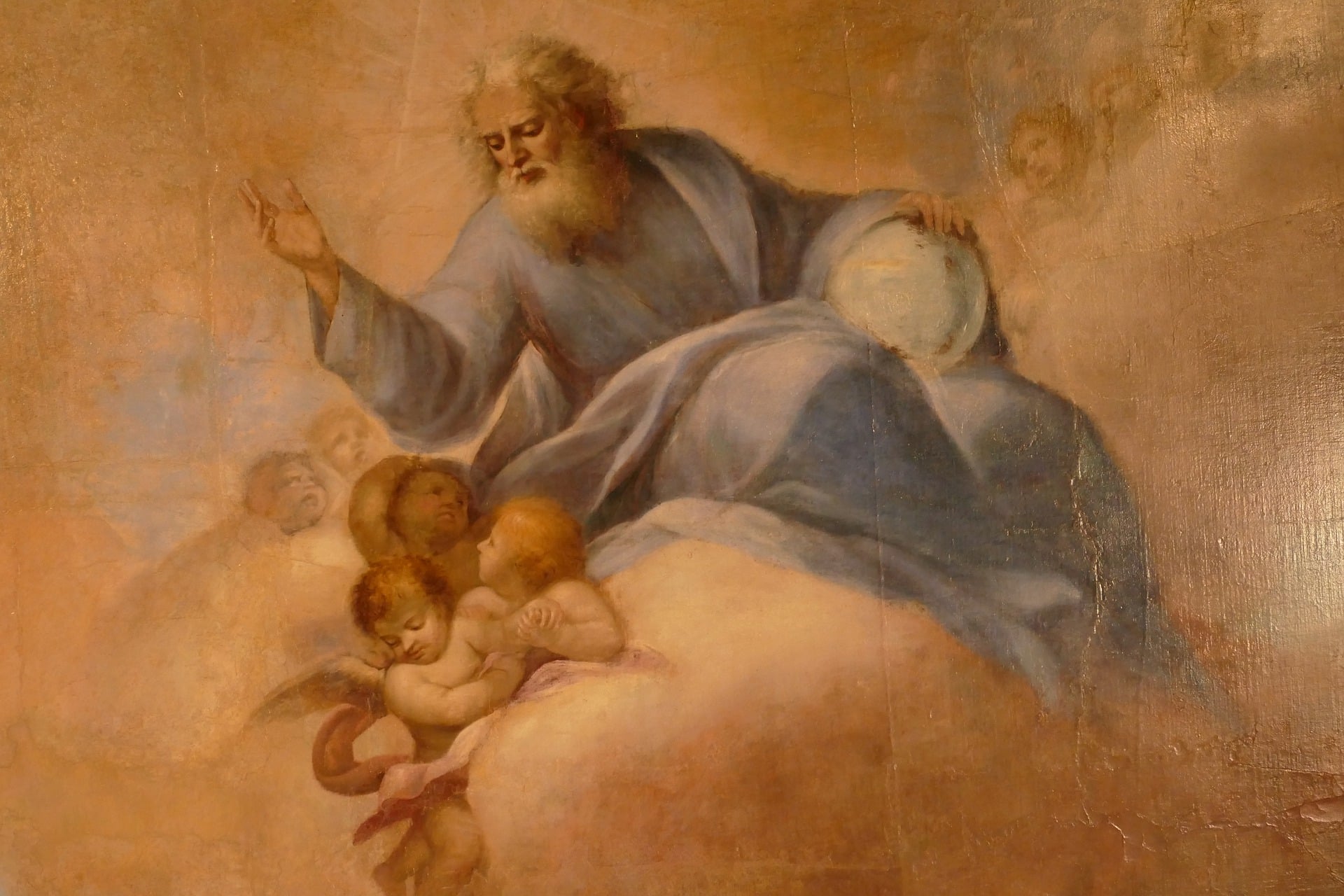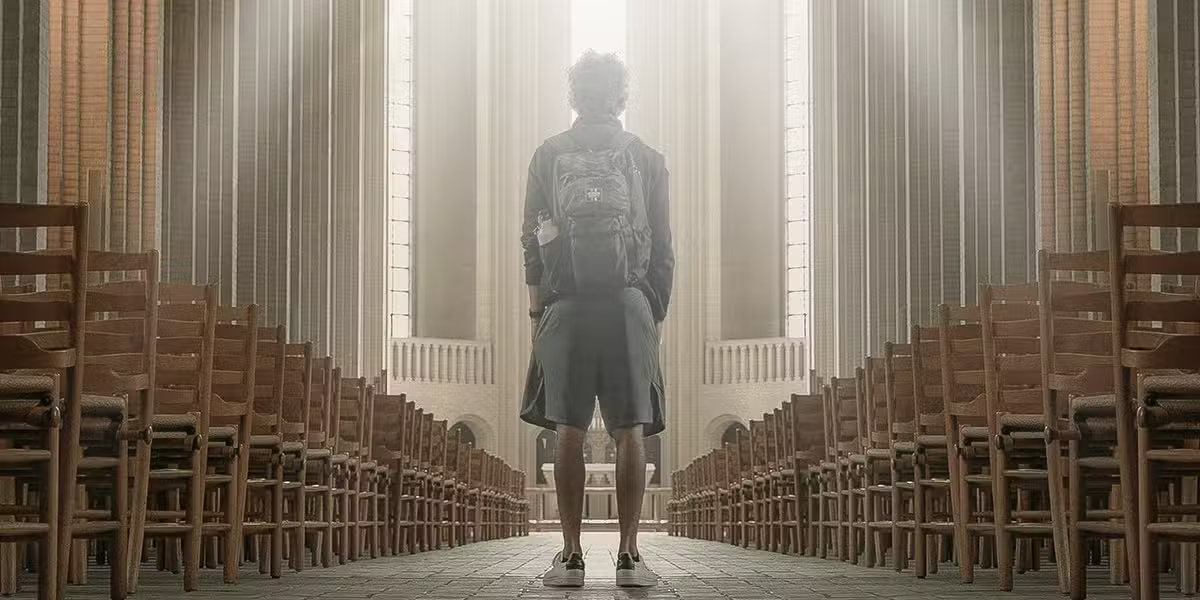Here’s a wonderful story about the late American Jesuit theologian Cardinal Avery Dulles that is no doubt as apocryphal as it is charming. He supposedly once slipped into a church and spied a banner hanging from the pulpit that read, “God Is Other People. “
After making sure the coast was clear, he took a marker from his pocket and inserted a comma in the wording that made it read, “God Is Other, People. “
Tucked away in the story’s humor is a permanent tension in how Christians understand and experience God, who utterly transcends anything we can think, know, or imagine. God is also intimately present in our experience, particularly in human relationships God Is Other People.
We live on a spiritual continuum between the two. We long for bread and are given living bread; for life and are given eternal life; for a shepherd and are given the Good Shepherd. But without ordinary bread, ordinary life, and an ordinary shepherd, the eternal depth of God’s grace is nowhere to be found.
We grow as human persons when we have an image of who we are and who we hope to become, coupled with a compelling story that gives real light to our path. Without image and story, our lives turn into little more than a collection of disconnected episodes in search of a plot.
Our growth as Christians follows a similar path. Until we find an image of God that enlivens our imaginations and quickens our hearts, our spiritual lives are a cluttered collection of experiences in search of substance and sustenance.
The Watchful Eyes of Emerson Burkhart
Let me give you an example. In 1958, my parents bought a self-portrait of Ohio painter Emerson Burkhart. It hung in our living room for the next 30 years. During that time, Emerson probably plugged his ears when I practiced piano, but he also shared Christmas celebrations, refereed bridge games, and silently held us in his gaze as we planned my father’s funeral.
I inherited the portrait in 1989, and it’s hung in my living room ever since. Emerson has seen me grow up and is now watching me grow old in his protective, calming sight.
You and I share a deep desire to be seen as special and lovable by someone significant. When this happens, we can finally take our place with the rest of creation as “very good ” in God’s sight. Our world becomes a place of grace and hope rather than one of danger and threat.
I start my prayer every morning in Emerson’s sight. He’s become a powerful image of God for me, an icon of God’s benevolent oversight, without which I can be tempted to let selfish isolation hijack my soul. Like people in the Gospels, we are made whole only in the healing sight of the God we recognize in Jesus. Emerson is a face I can put on Jesus that shows me what God is like.
Allowing Emerson’s image to remind me of God’s love also helps me see what goes on around me with new depth. For example, I often see a mother bring her visually and mentally challenged adult son to Starbucks for a treat on Sunday afternoons. While there, they reach for one another’s hands, wordless reassurance that they are both still there for each other. Who doesn’t need to be reassured that we’ve not been abandoned or left to die? We probably surround ourselves with pictures of friends and family for the same reason.
Human and Divine
Each year we celebrate the Baptism of the Lord, and our attention is drawn to what the words and actions in that story say about God, Jesus, and us (Mk 1:9â11). When John baptizes Jesus, the heavens open, the Spirit descends, and a voice describes Jesus as God’s beloved someone in whom God takes delight.
Our image of God needs to be rooted in this story, because we find our real life when we hear God speak the same words into our hearts: you are also my beloved in whom I delight. My praying and living under the loving gaze of Emerson Burkhart comes with a depth that finds final expression and completion in a Gospel story like this. In the end, both images merge and yet both remain distinct. This is the great mystery of all love human and divine.
Blurred Vision
Being human, though, means imperfection.
My birthright is second-class vision. I can’t remember a time without glasses, and McHugh family lore holds that I even asked my mom if I had glasses on when I was born. I can’t remember what she said, but I do know that my eyesight has always been just good enough to get and keep a driver’s license.
A week or so before I started college, I had my eyes examined by an ophthalmologist I had never gone to before. He was smart and professional, and had a soft-spoken manner about him. But if you listened carefully to what he said, it was fairly clear that this guy flunked Bedside Manner 101.
“You’ve got terrible binocularity, ” he said, “and that’s why you have a bad case of imperfect stereopsis. ” Since he used two interesting words I’d never heard before, I interrupted his spiel to find out what they meant.
“You don’t use both eyes; that’s why you’ve got borderline depth perception. ” He sounded downright irked with my question, but he went on. “‘Imperfect stereopsis’ means that since your eyes don’t work together, they don’t come together in a single point on the horizon right in front of you. That’s why you have trouble calculating how far things are away from you. ” I sort of understood, but I bit my tongue, not daring to ask another question.
“If you get a job that requires lots of reading, ” he snapped, “it would be like somebody with a clubfoot going out for track. ” Just the encouragement I needed right before I packed up for college.
It galls me to say it, but he was right. I use only my right eye to see. If I squint, I can use my left eye by itself, but I never use them both together. You might say I have either/or rather than both/and vision.
Whenever blindness comes up in Scripture, it’s usually a metaphor for spiritual blindness, or what we might call imperfect spiritual depth perception. When Jesus gives sight to the blind, their physical eyes are opened, but so are the eyes of their heart. If we take these stories as metaphors for our own spiritual blindness, we’ll soon discover our own need to make our way to Jesus to have our spiritual sight restored, or at least deepened.
Was Blind, but Now I See
Keep in mind that how we see is often just as important as what we see. How we see something determines how we understand it, and seeing something clearly for what it is on its own terms, not ours helps us discern its personal meaning for us. How we see God and self, prayer and discipleship, love and service, is crucial for living a Gospel life.
We can suffer from imperfect spiritual binocularity. Some of us can only see our grace or our guilt, but we rarely see them together. Others see only death or resurrection, loss or gain, sacred or secular, real life or spiritual life. As a result, we see with little spiritual depth because these seemingly irreconcilable experiences never meet in the merciful heart of our God.
We need Jesus to smear our eyes with mud and spittle to heal our damaged spiritual vision the one-sided way we might see God and ourselves. Our gift, however, is in seeing ourselves with both eyes. That’s when we see ourselves as God sees us: a loved sinner.
We have to keep telling ourselves that we have a both/and rather than an either/or God. As our spiritual binocularity starts to heal, we see guilt and grace, death and resurrection, loss and gain, giving and receiving, and sacred and secular in a single vision that is not only healthy, but also saving.
We need to make regular appointments with God to have the eyes of our heart examined, and, when necessary, change the prescription for our glasses. Allowing our injured eyes to be healed in the loving gaze of Jesus keeps God and grace as part of our lived experience, not just polite ideas. All we can do is bring our either/or vision in prayer to Jesus for continual healing over time.








